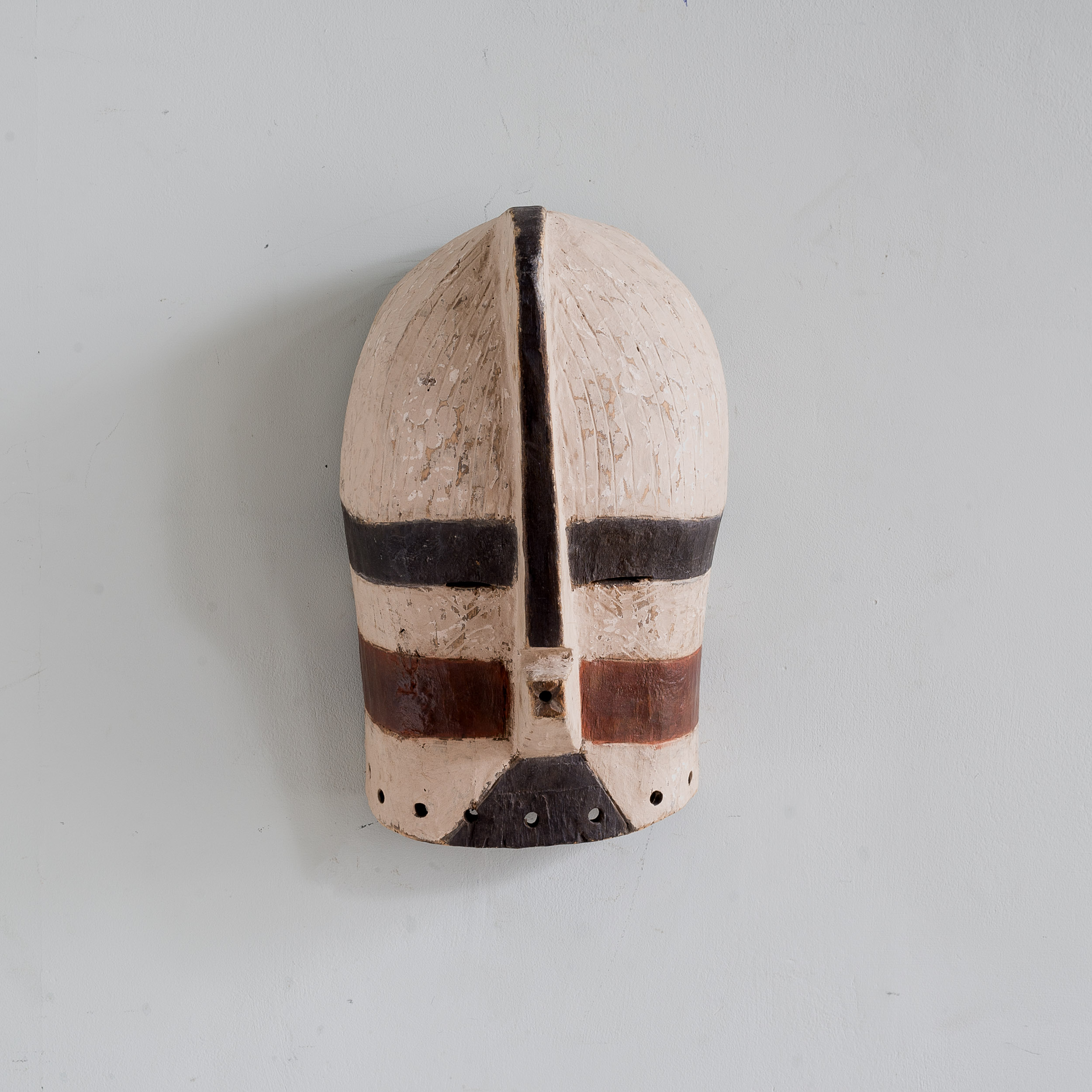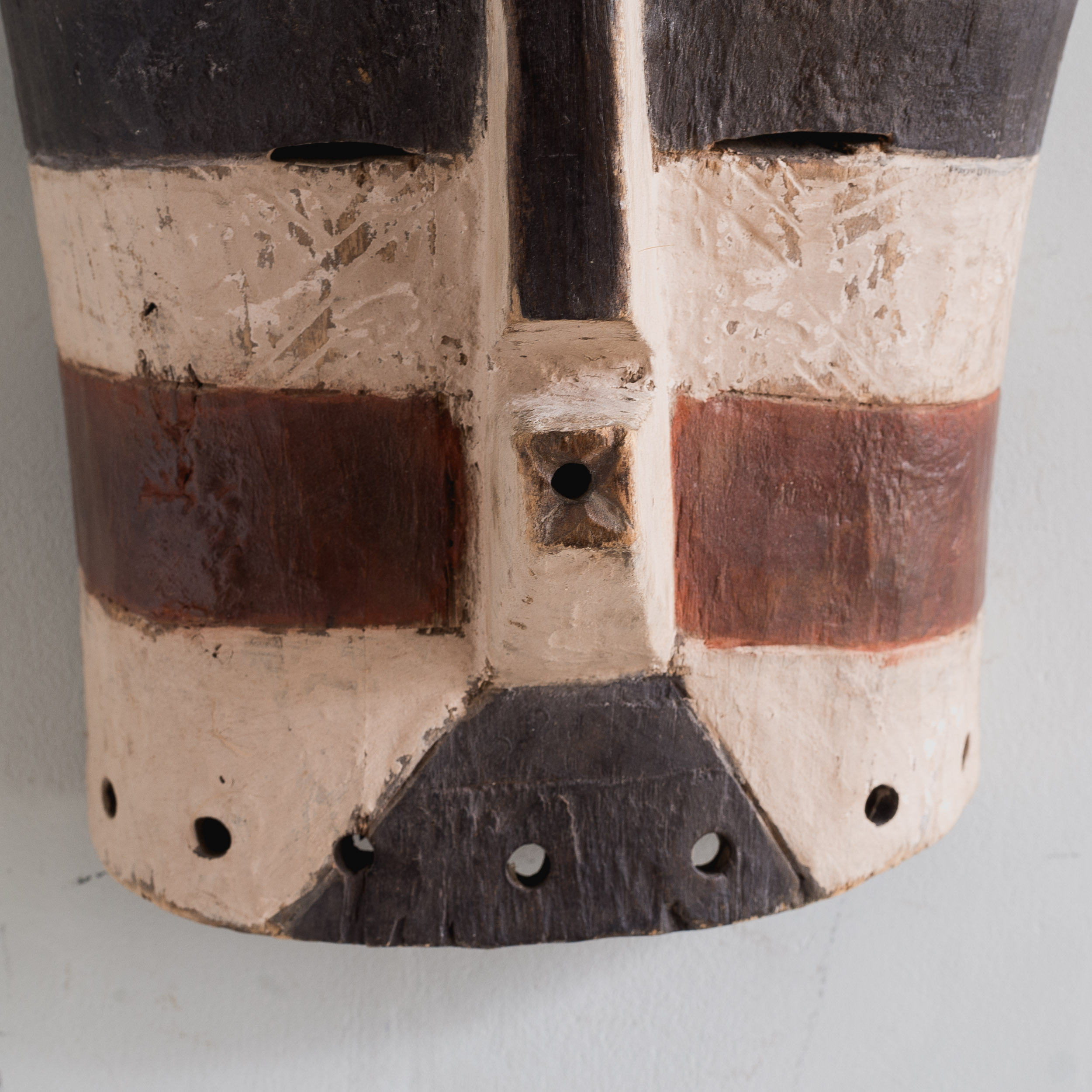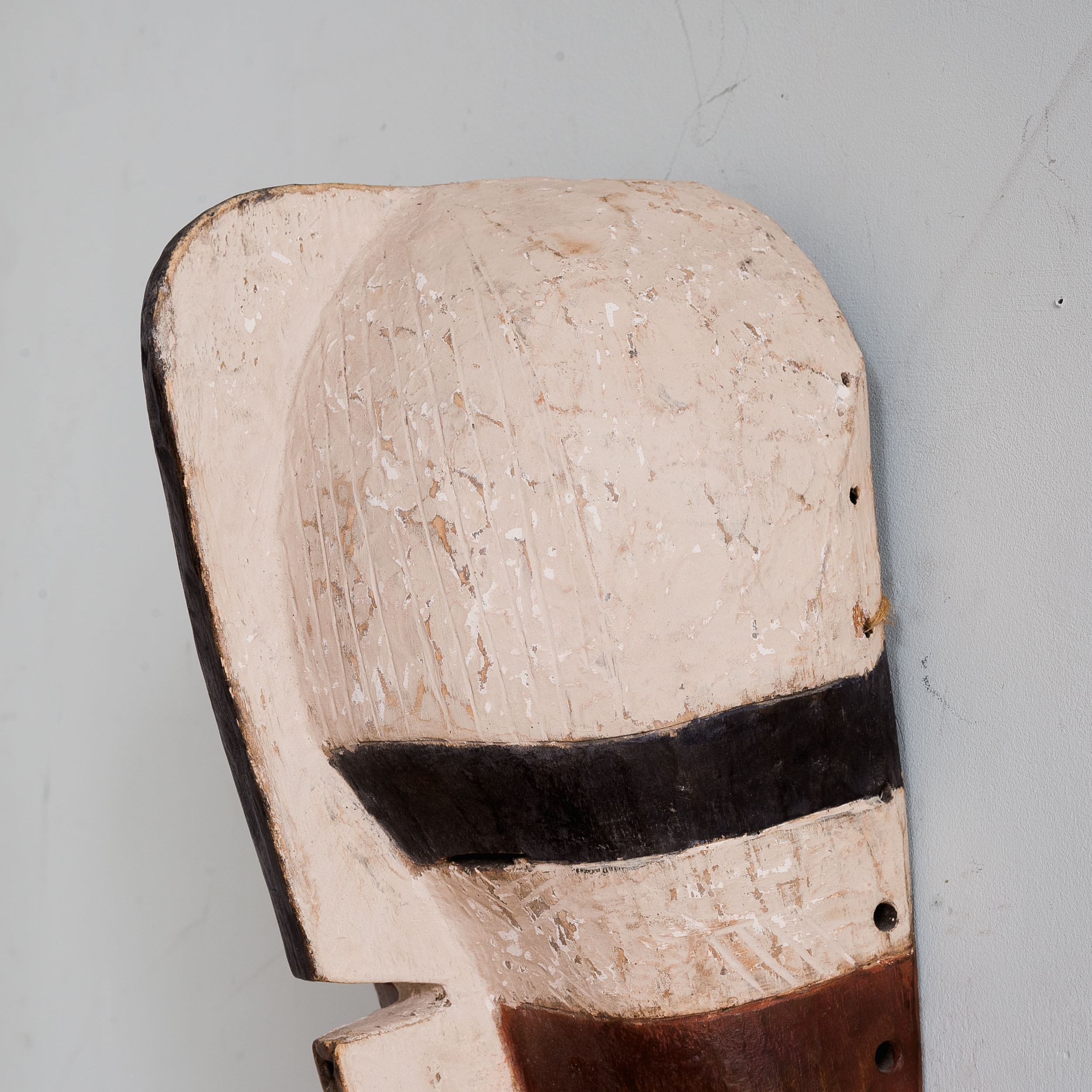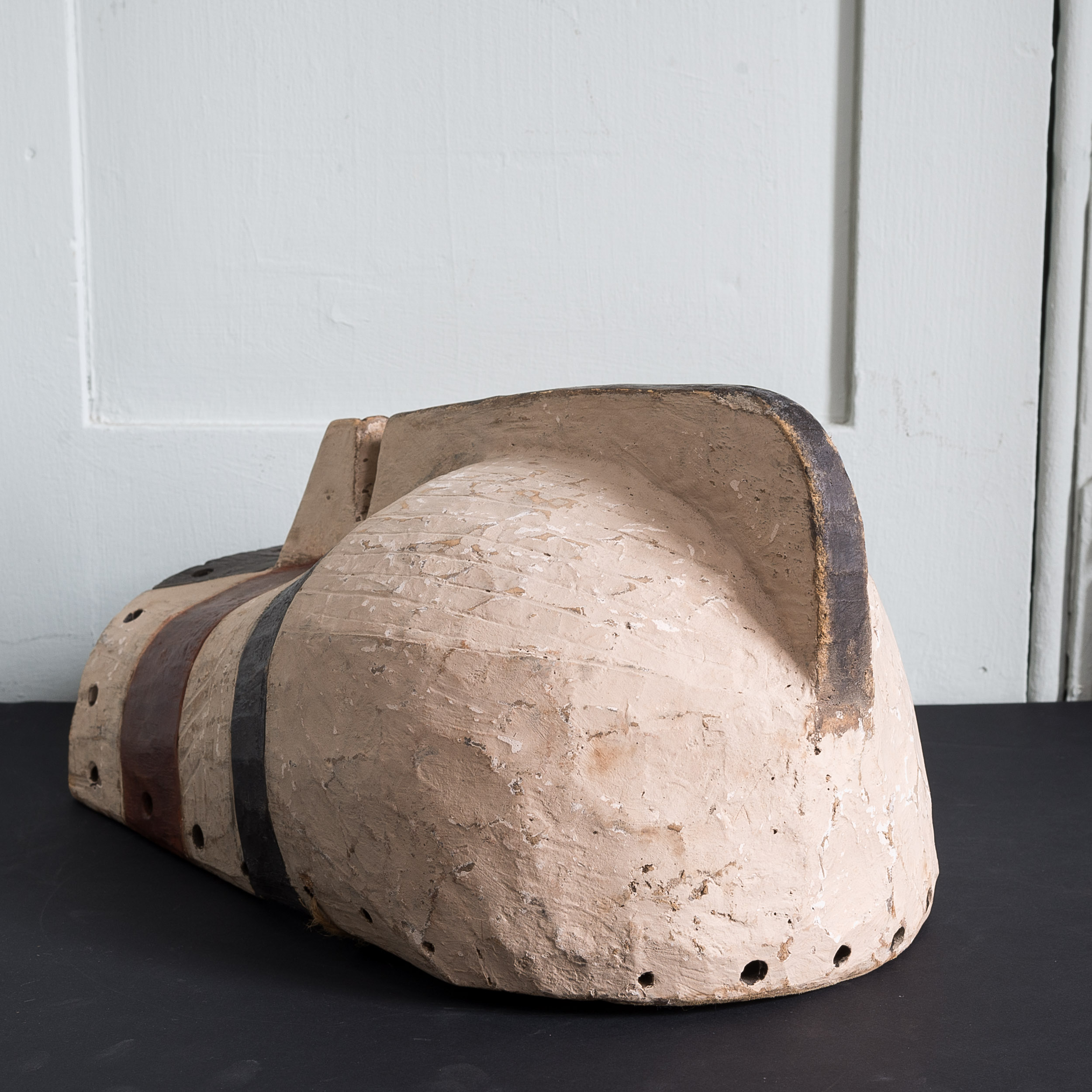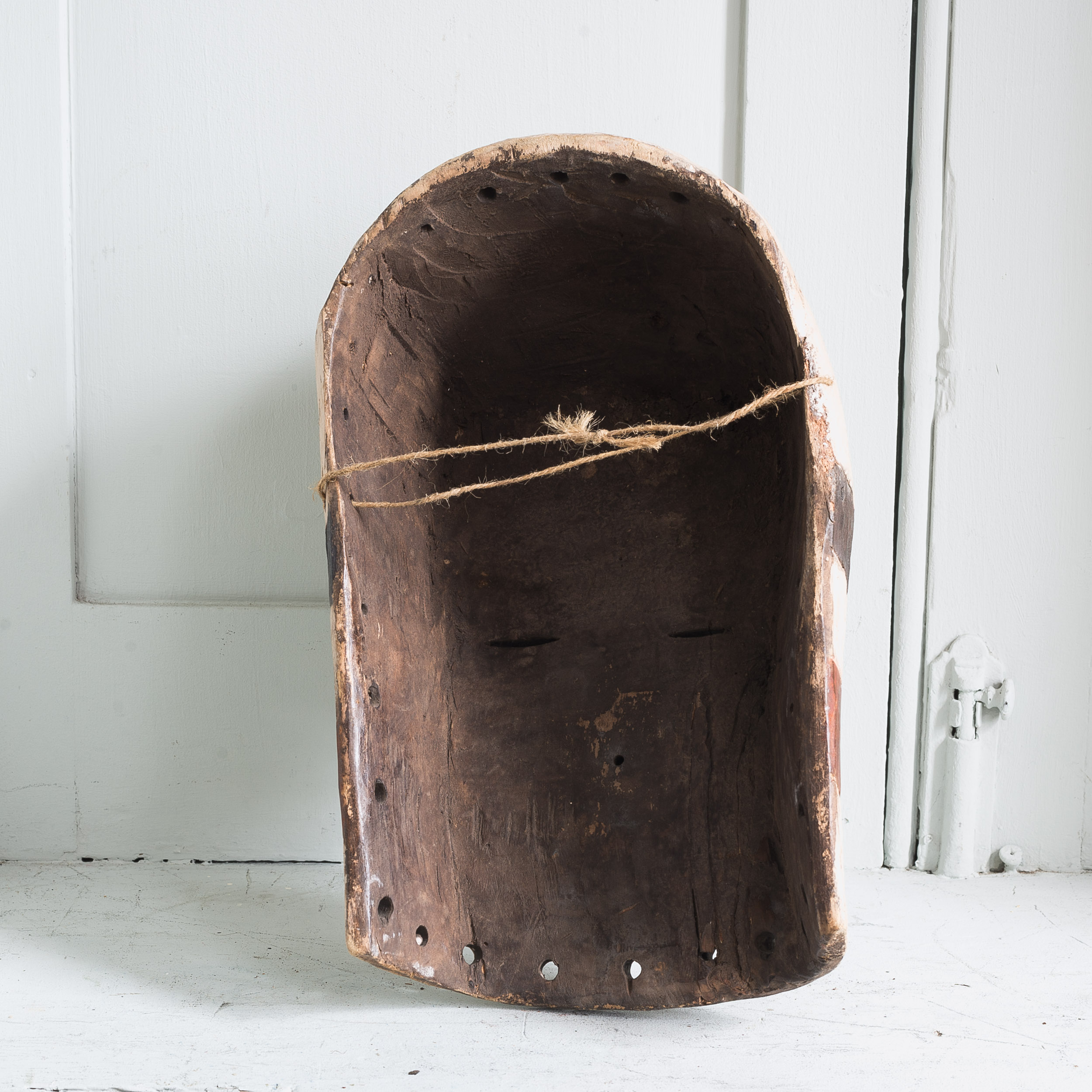Songye Luba mask (B)
Congolese, with typical decoration.
The people of Songye are mainly known as a farming community, however they also take part in hunting and trading with other neighbouring communities. The distinct Songye style is easily recognisable in the Kifwebe mask by the mass of closely carved lines and bold shapes such as the protruding sagittal crest and X carved mouth.
The intertwining of the red, black, and white colours in these masks are said to symbolise the struggle between good (white) and evil (black and red) - the combination of these colours embodying the positive and dangerous force held within the mask. Further, it is believed that the sagittal crest and conical protrusion contain the magical strength of the mask.
£200
In stock

